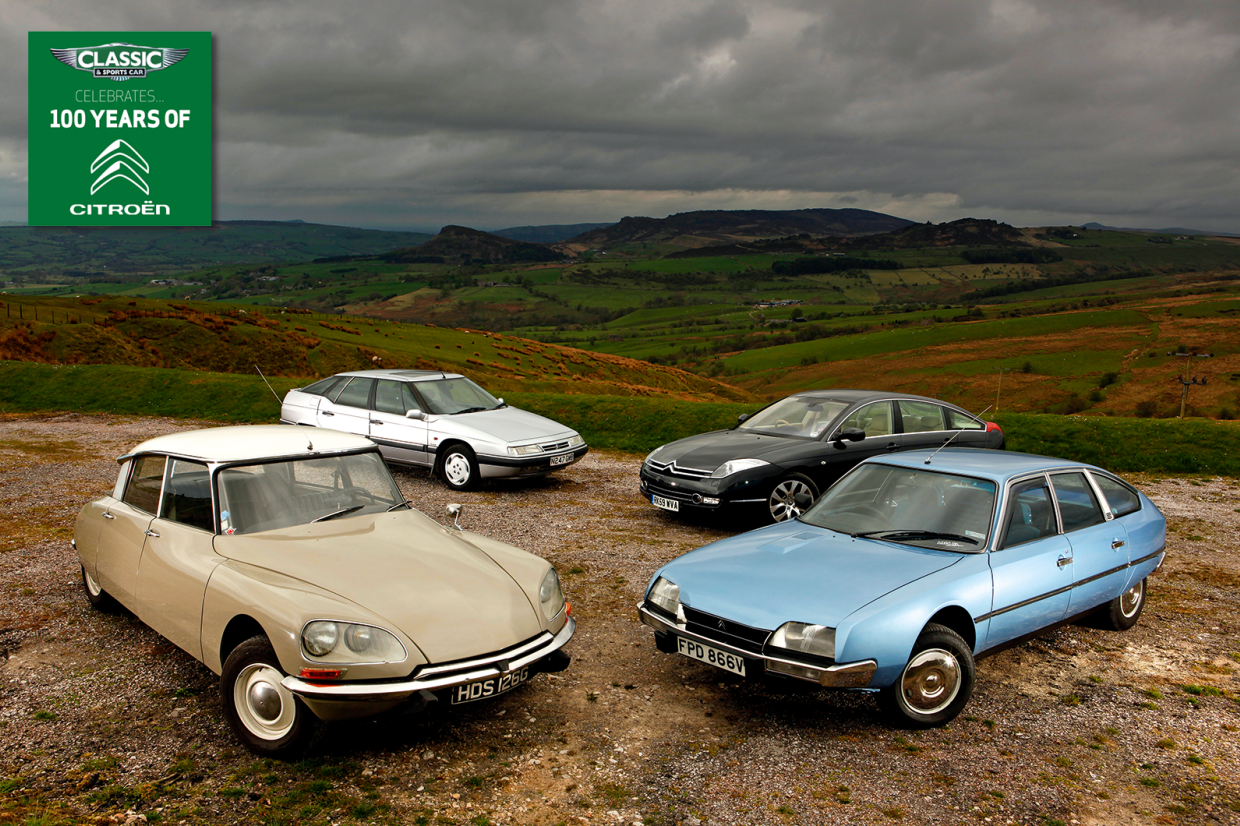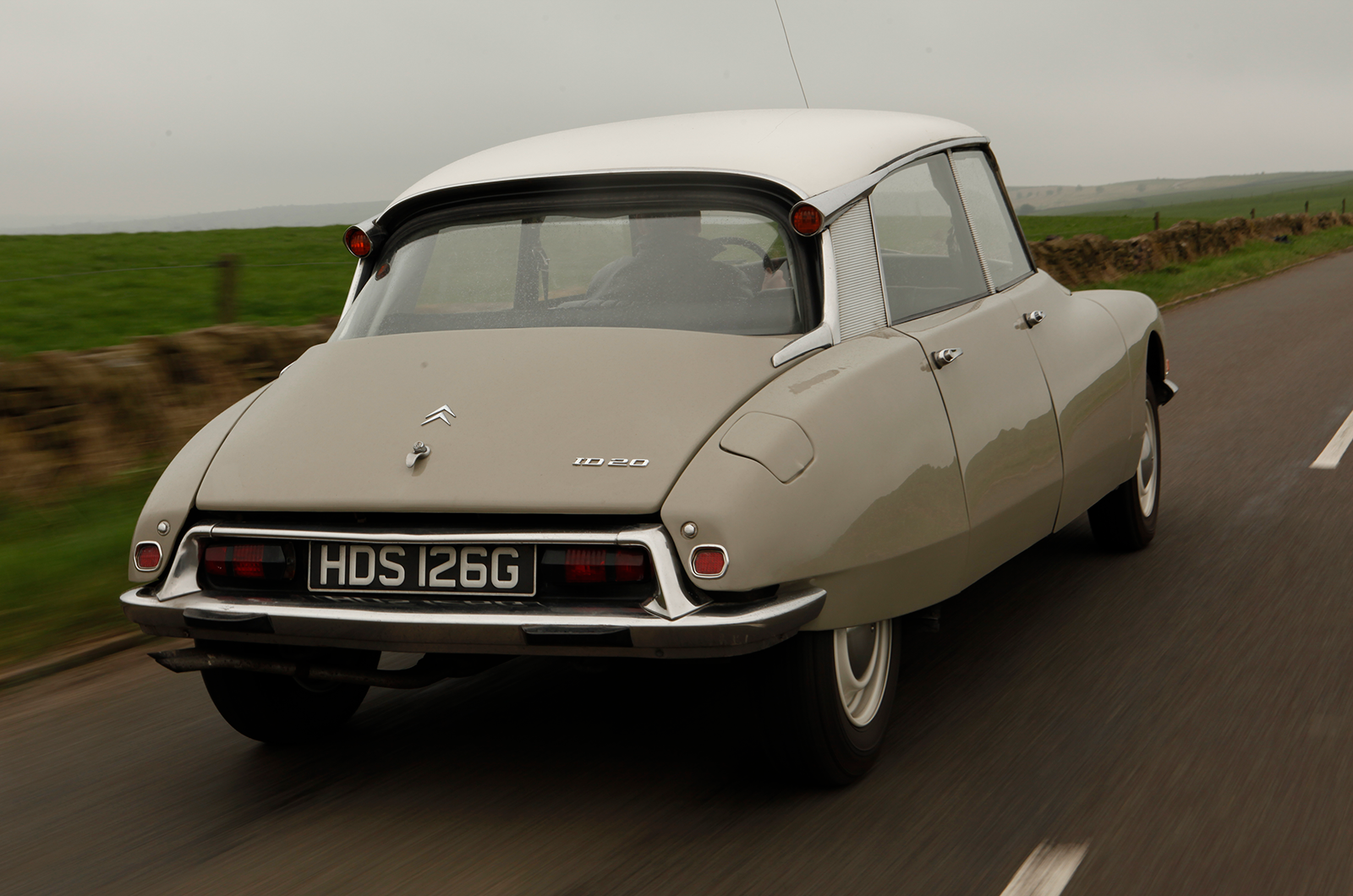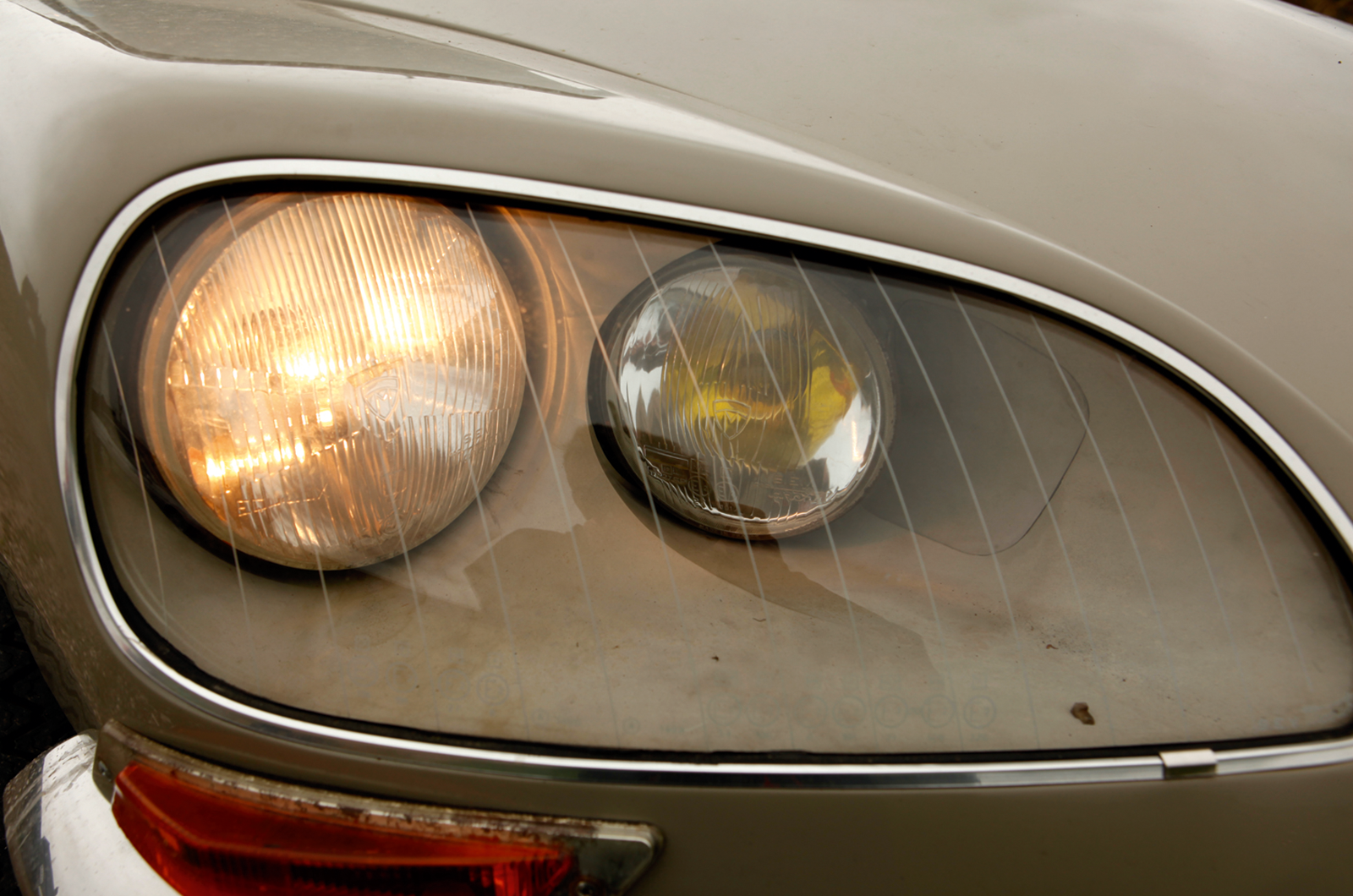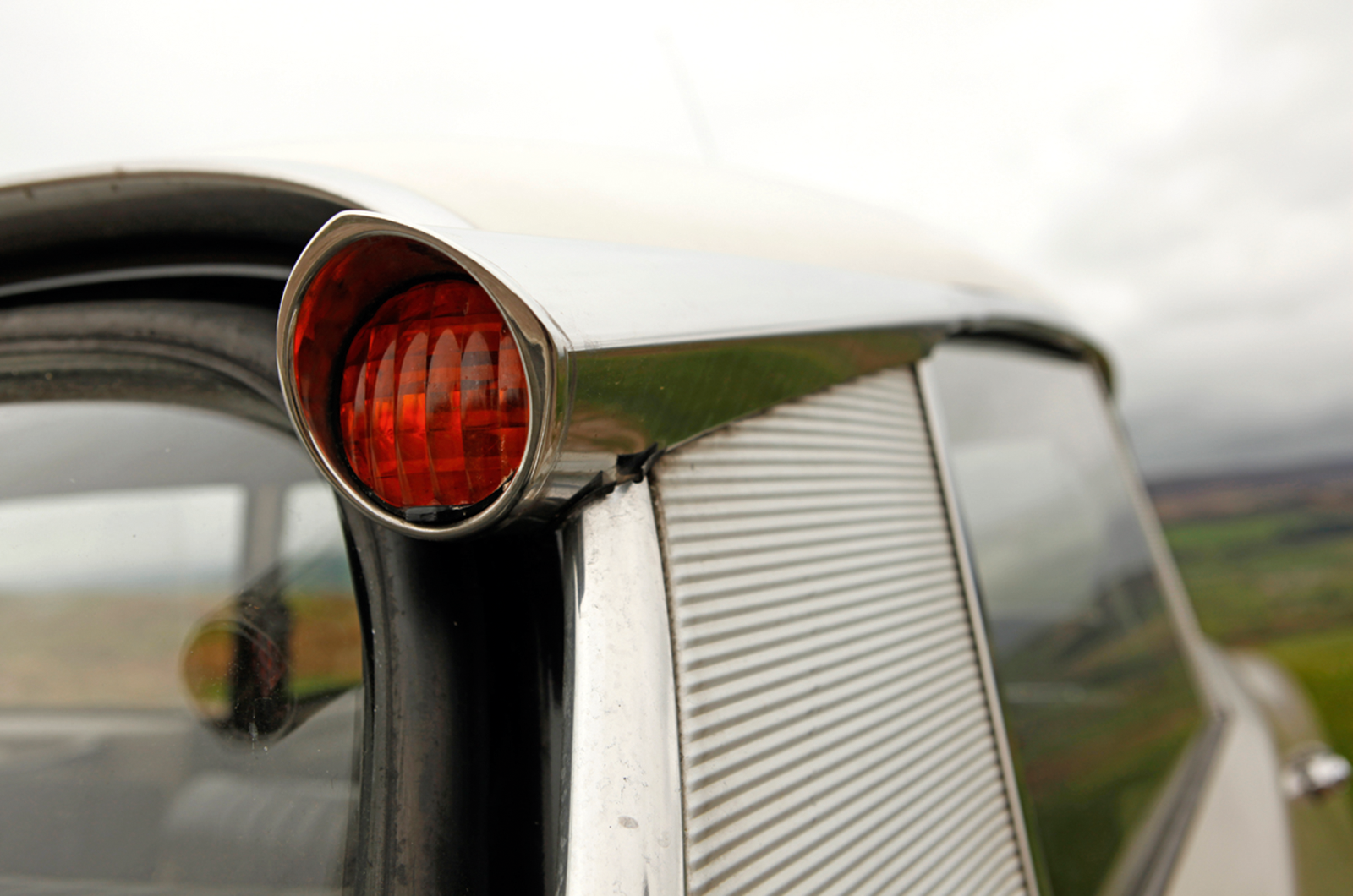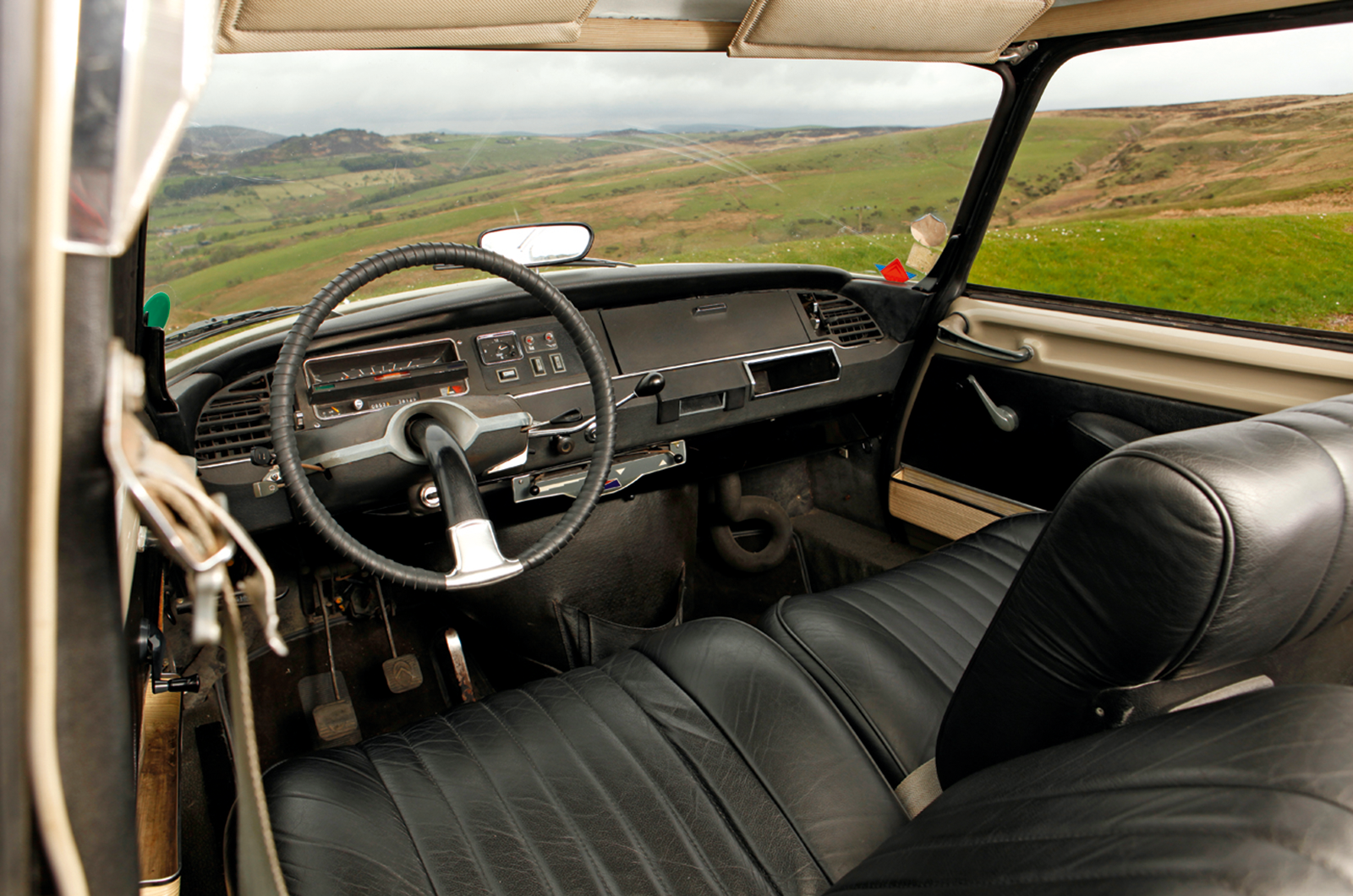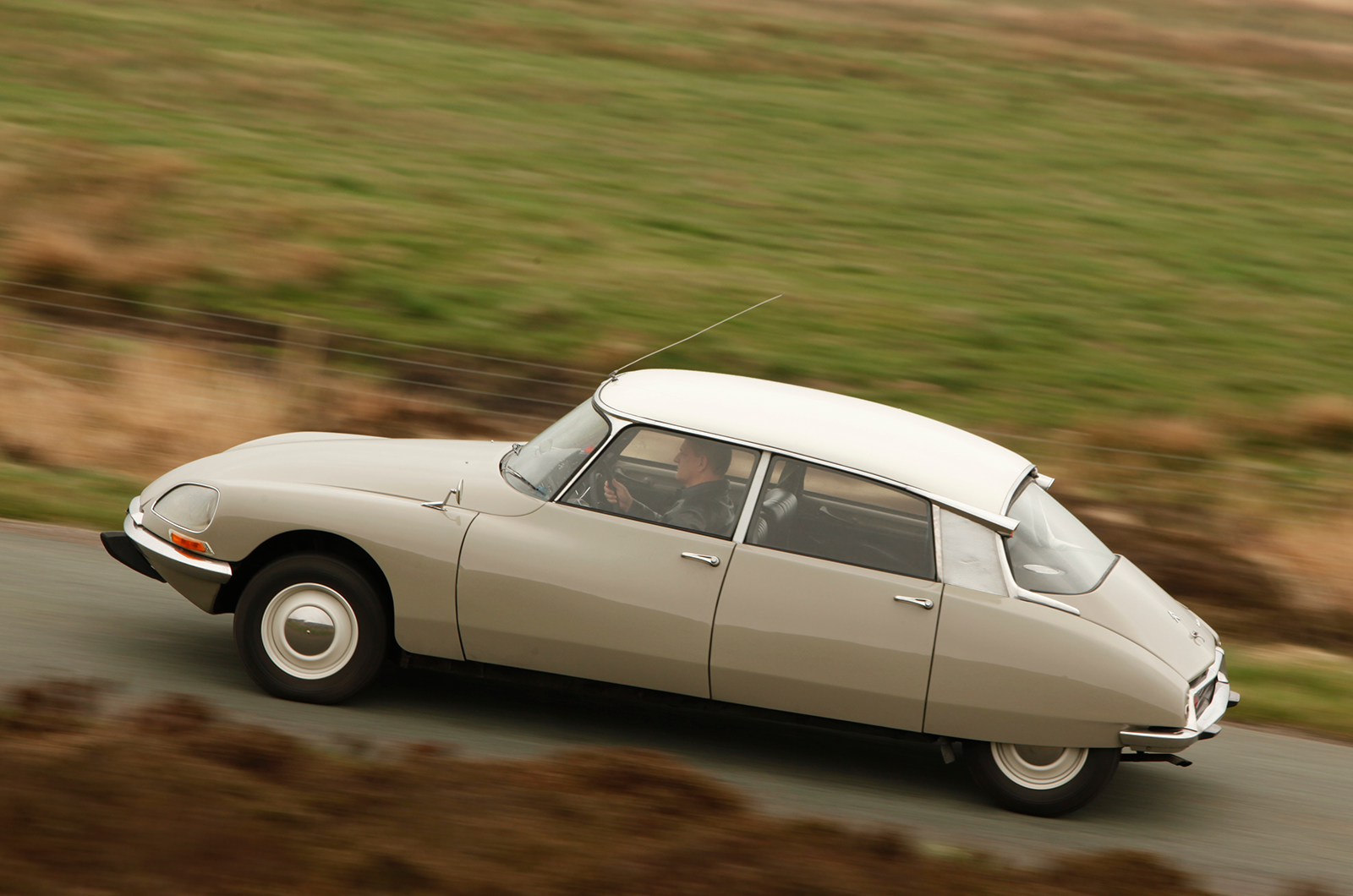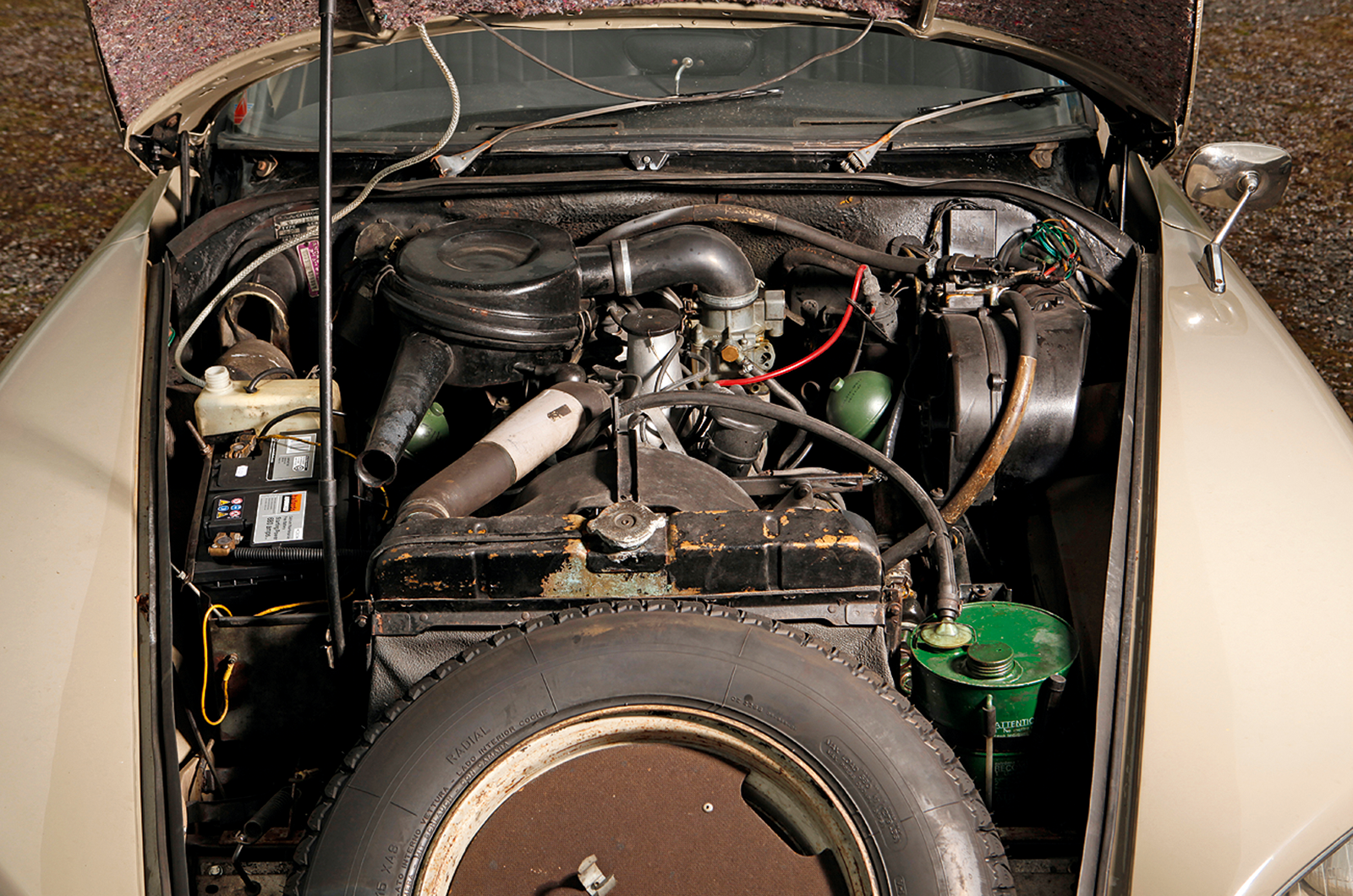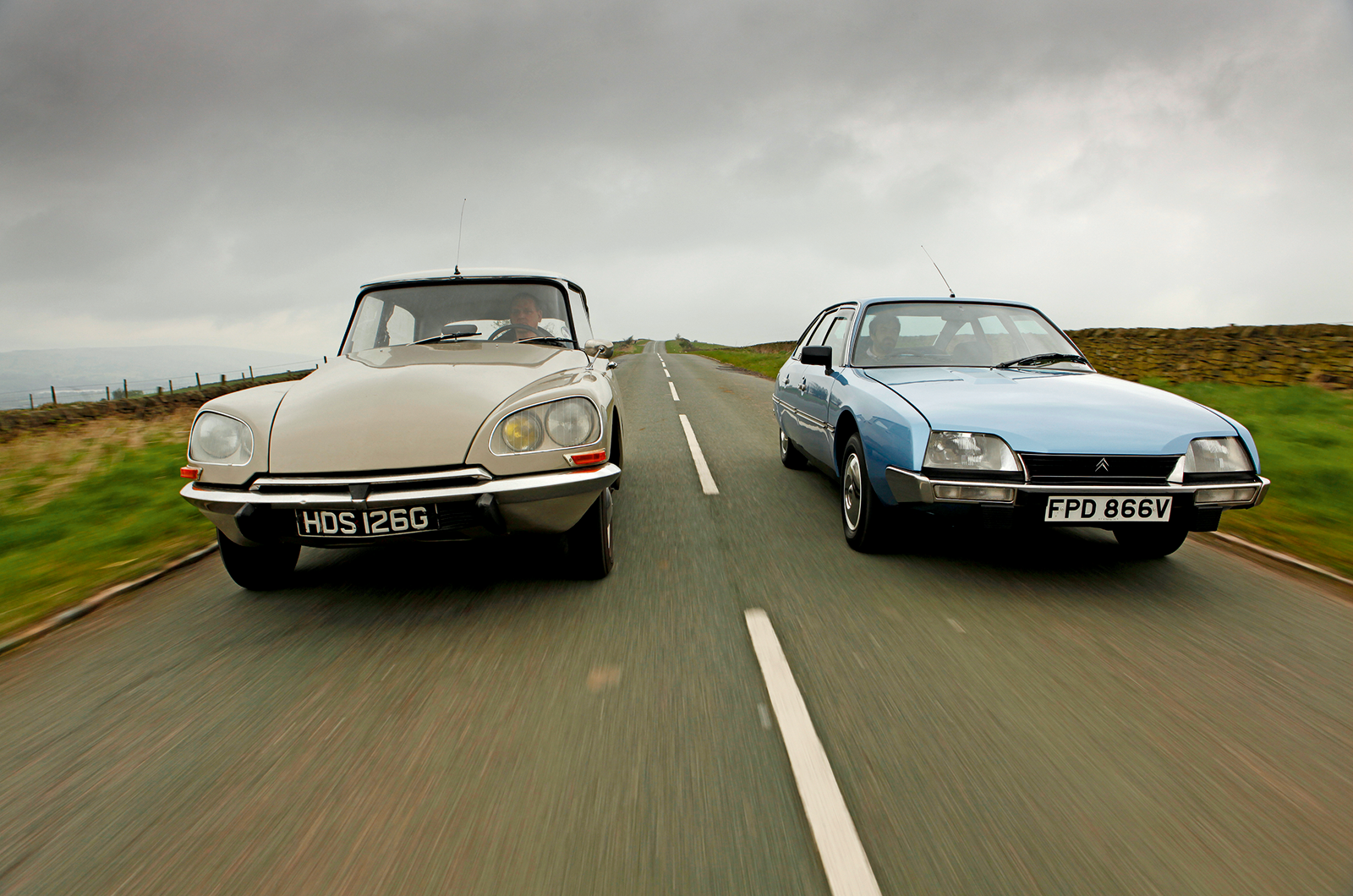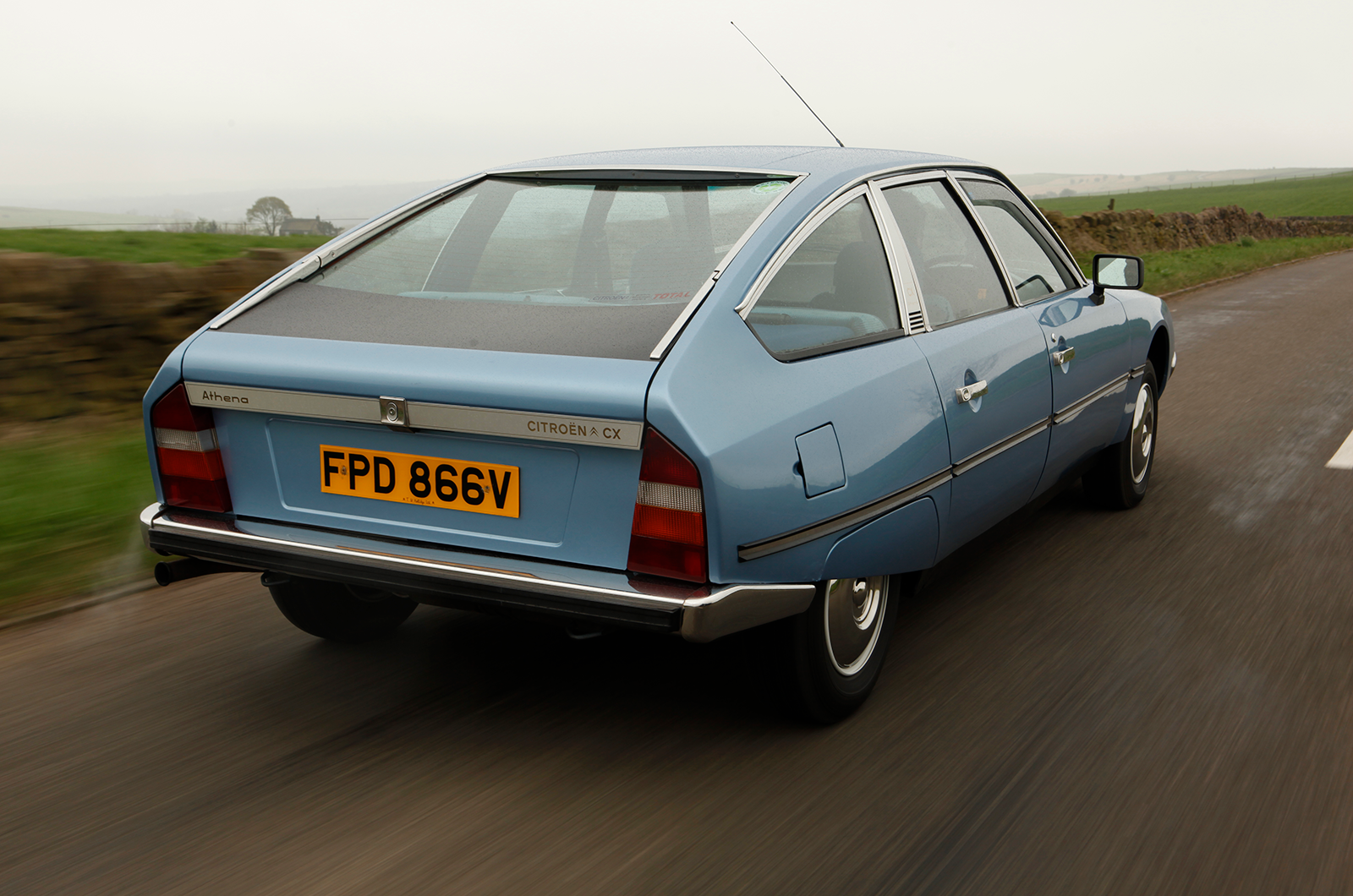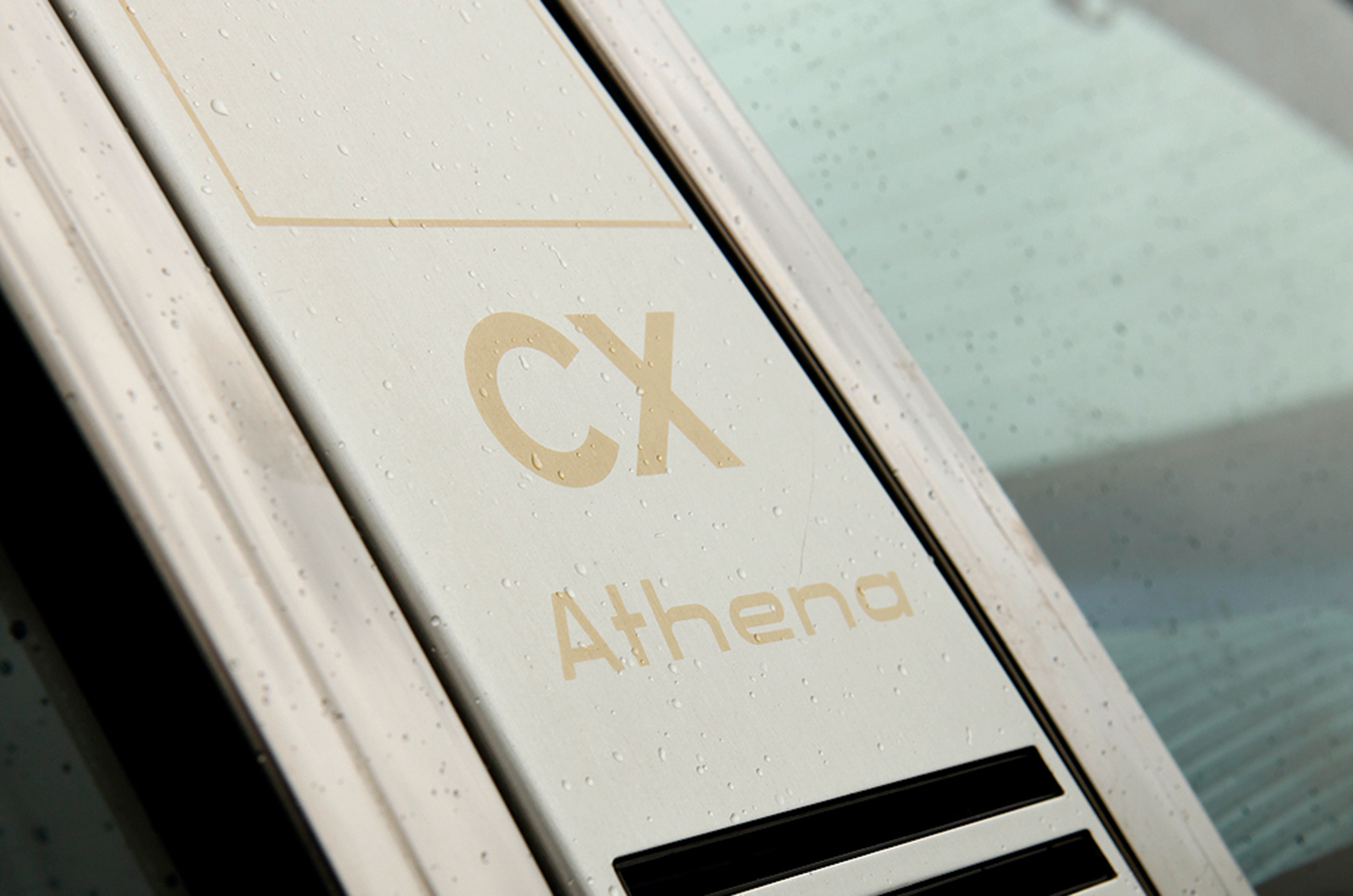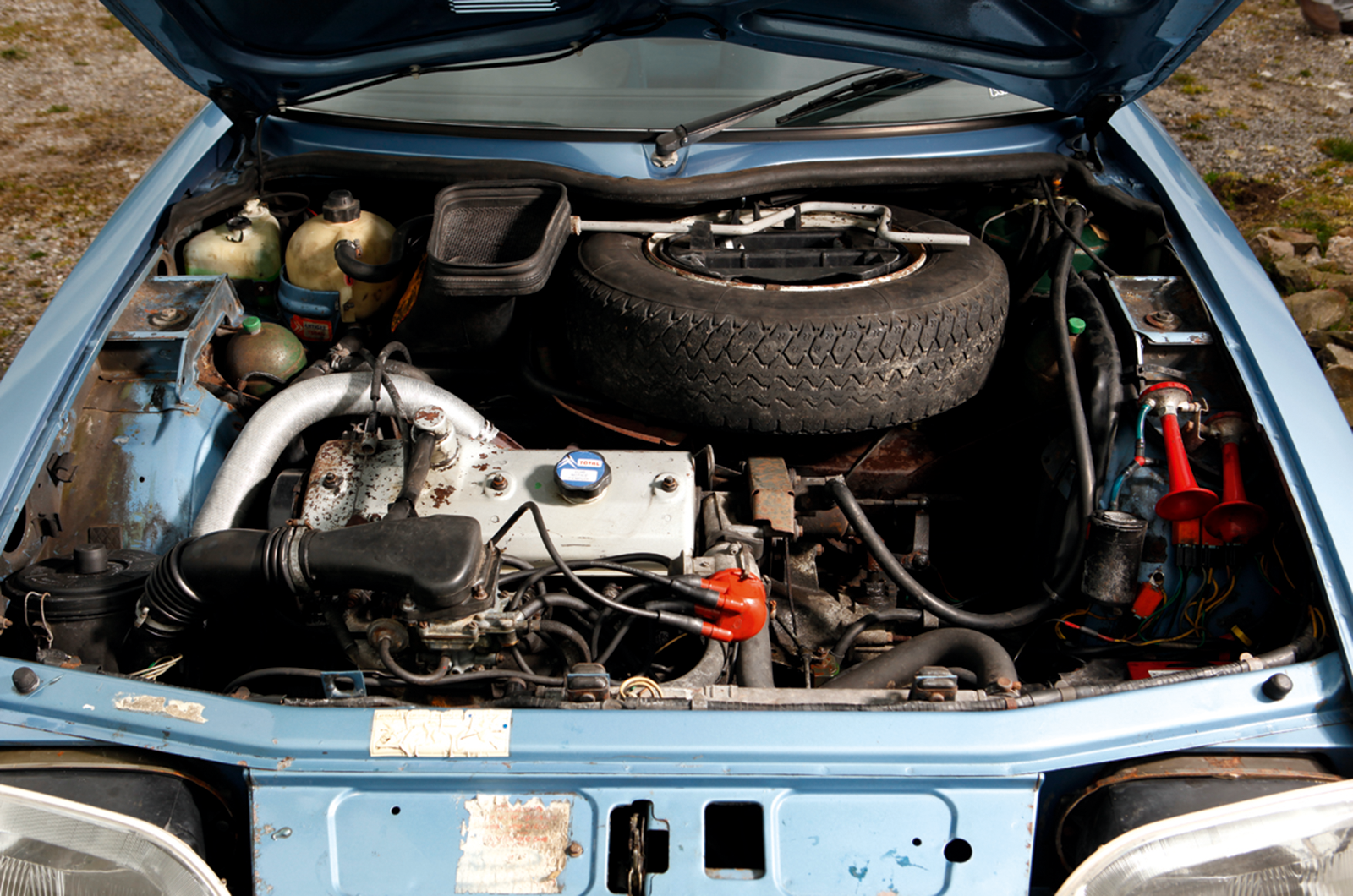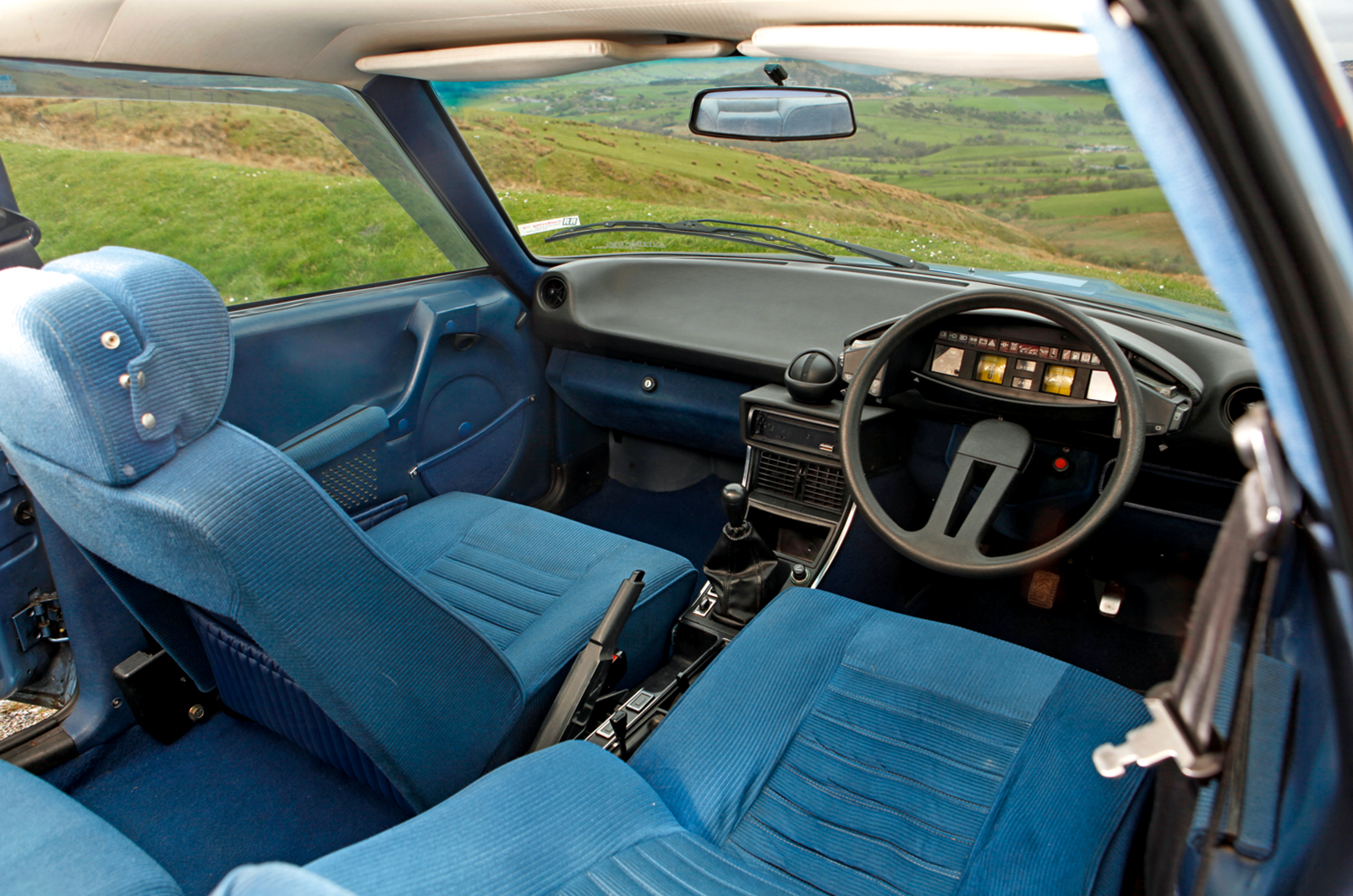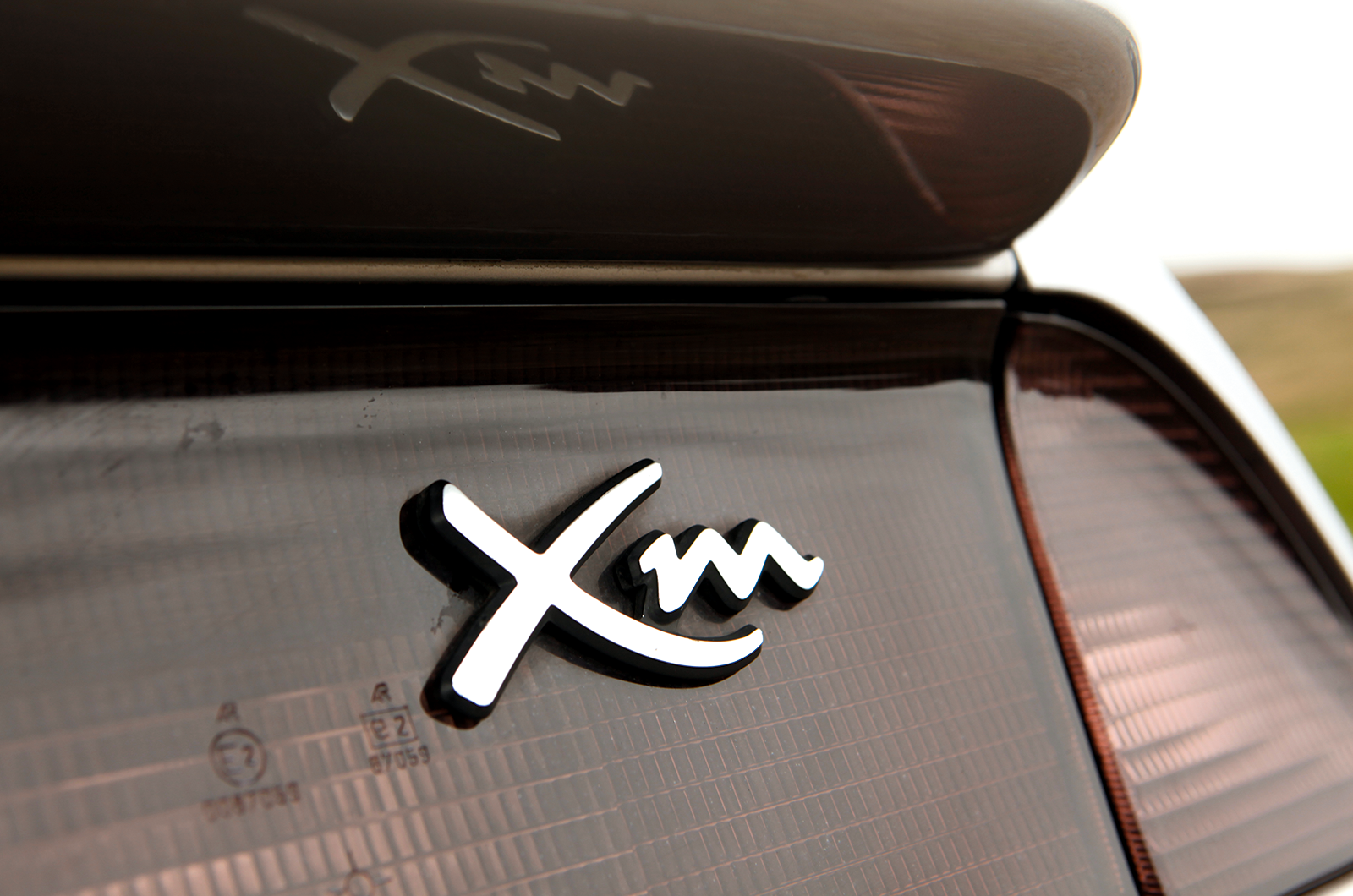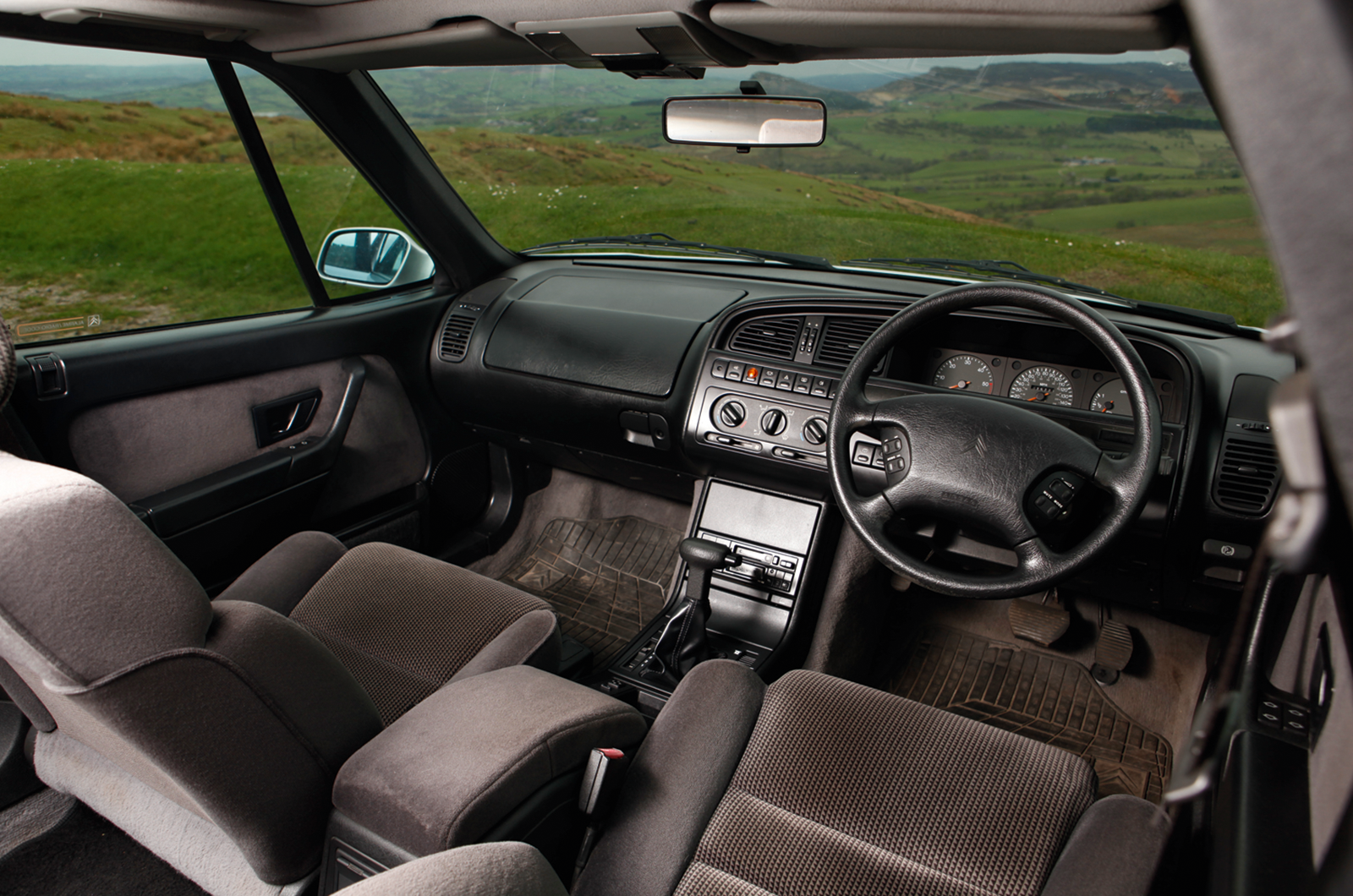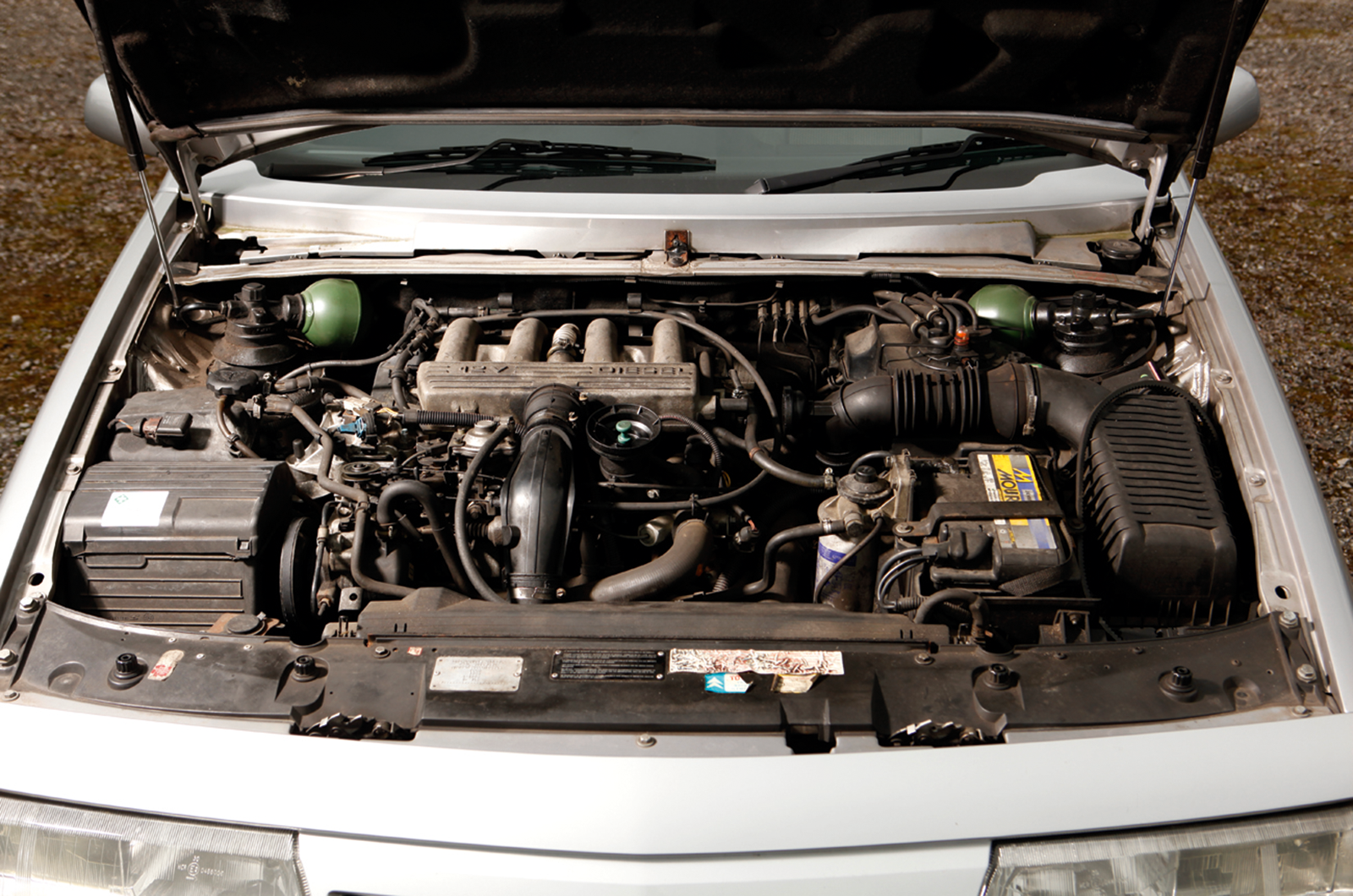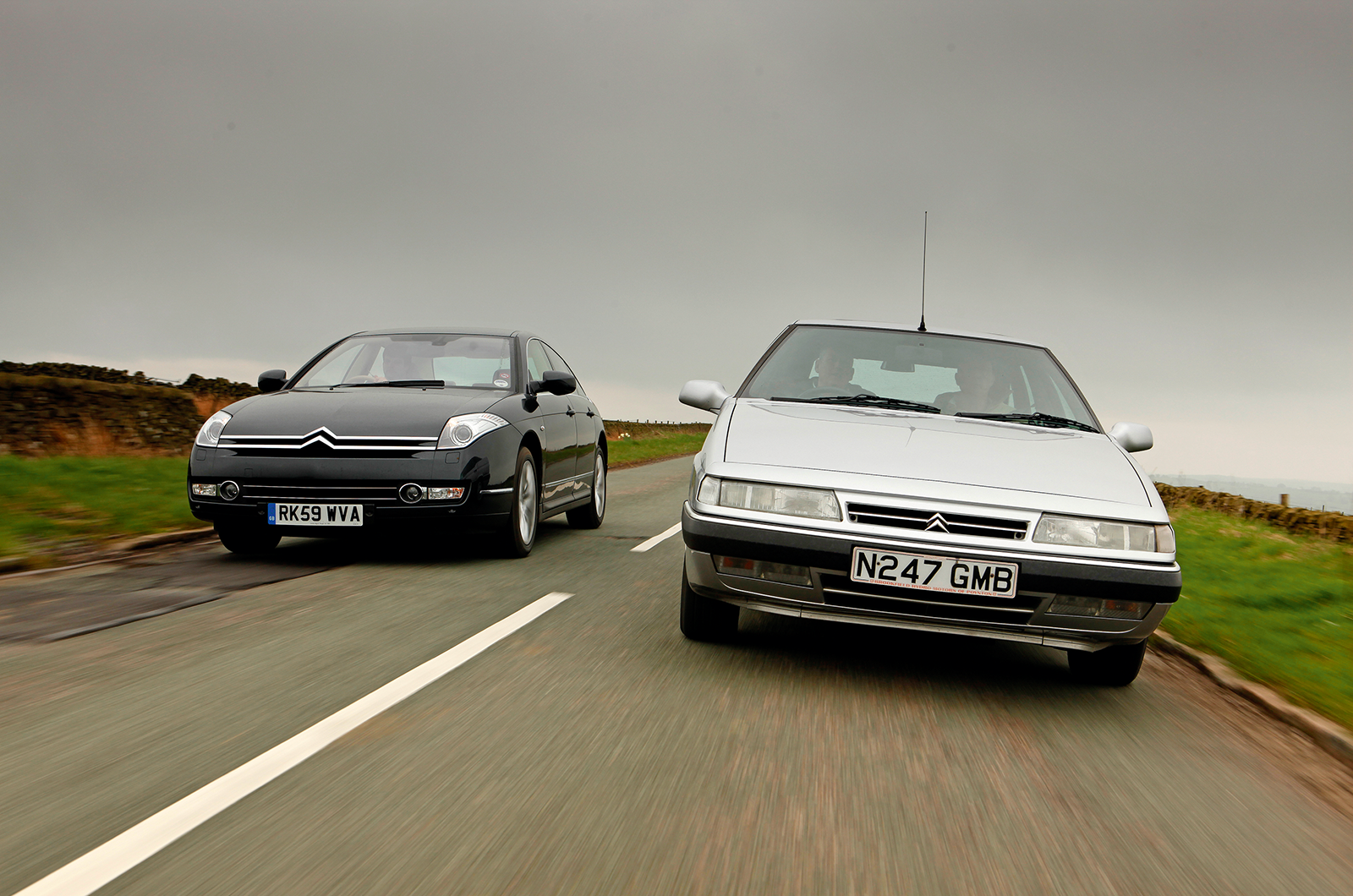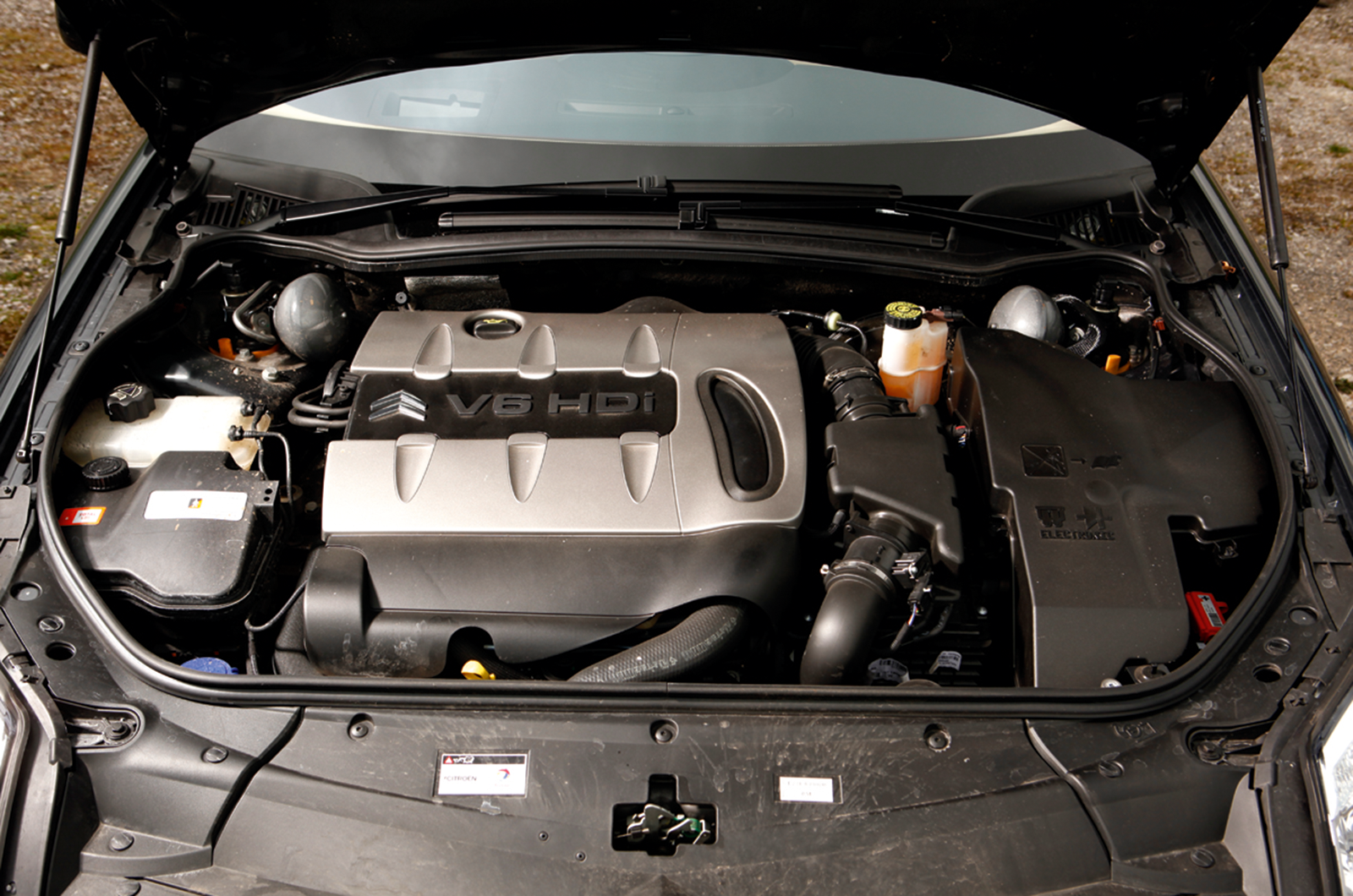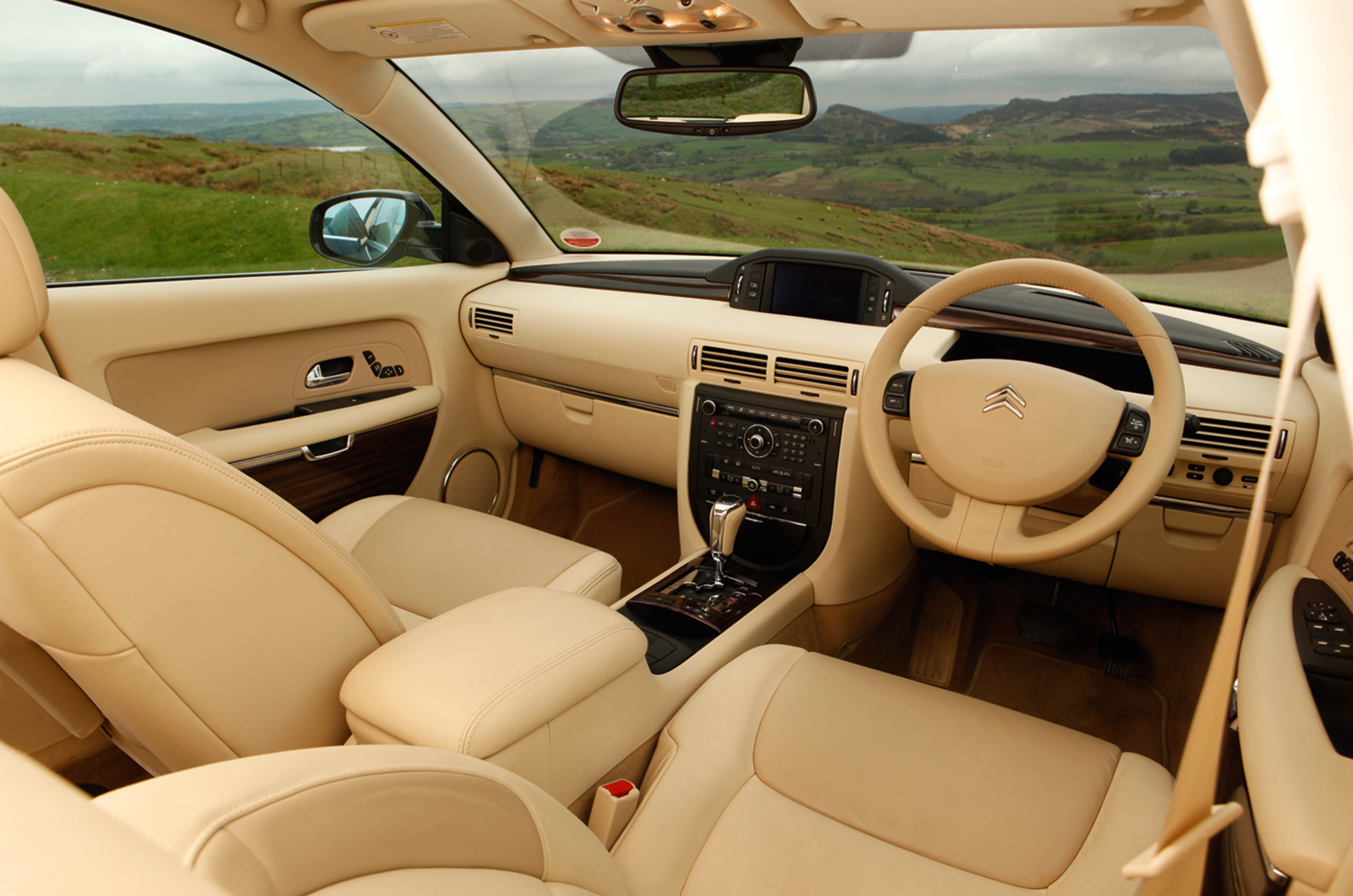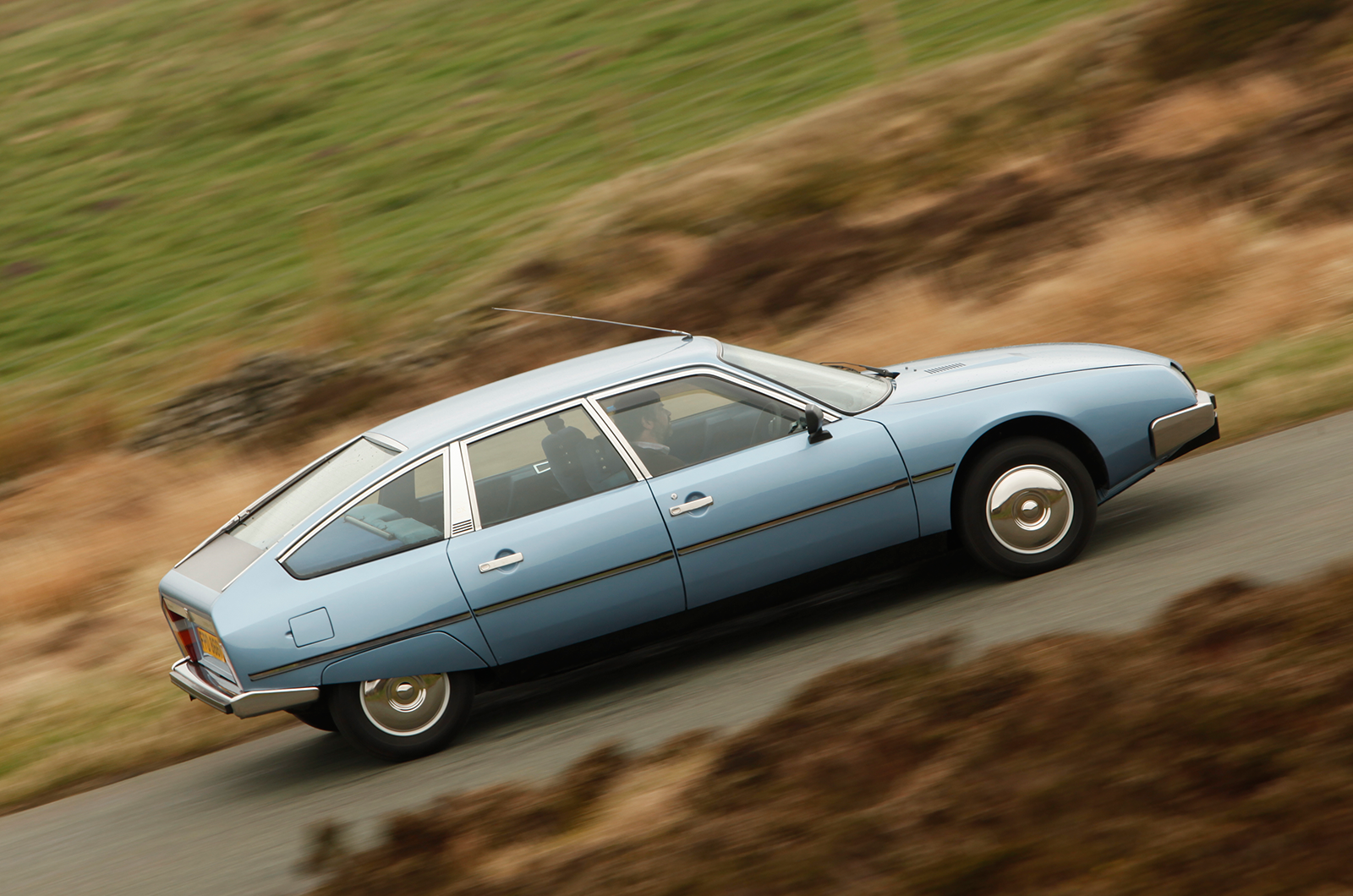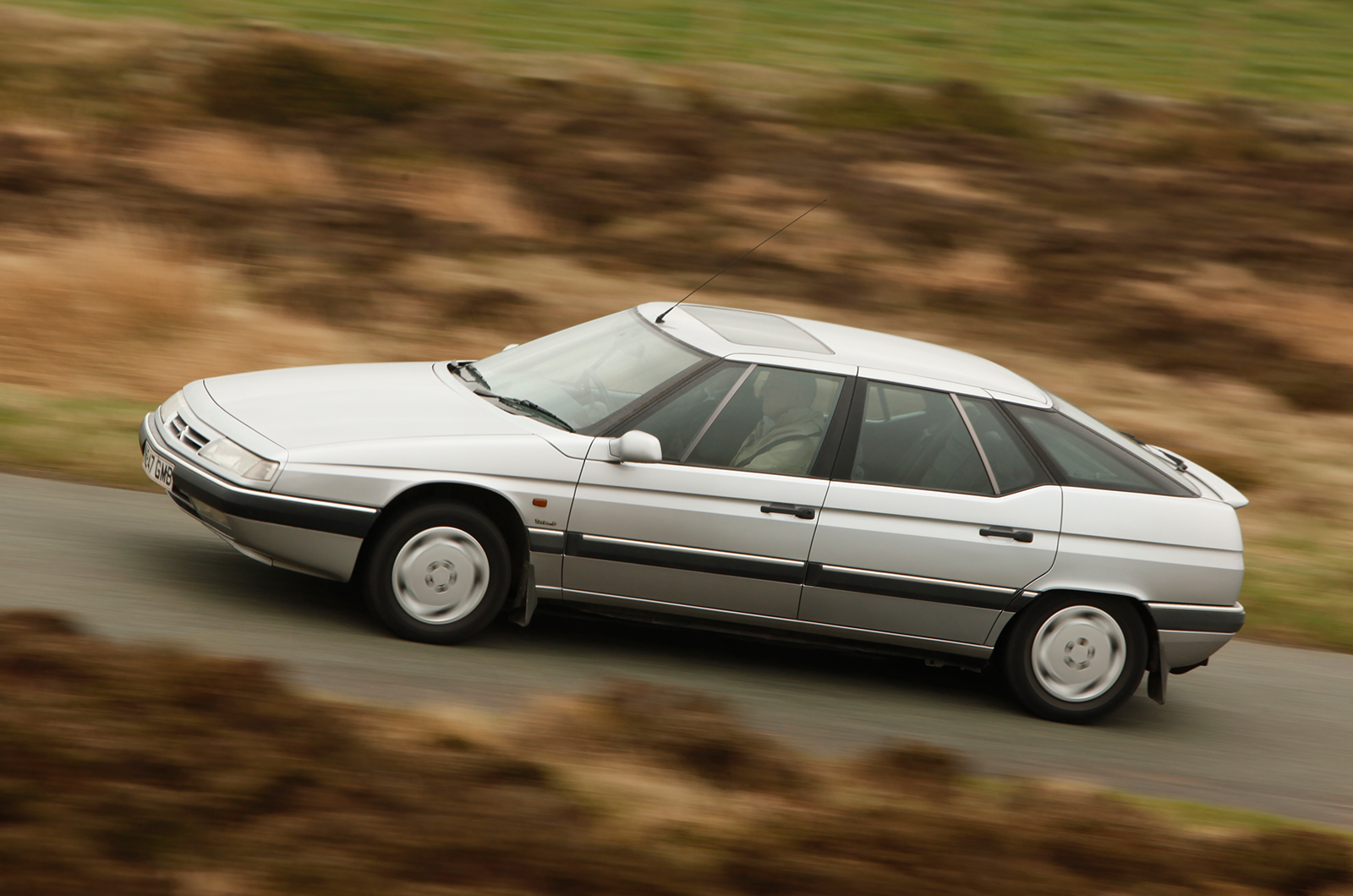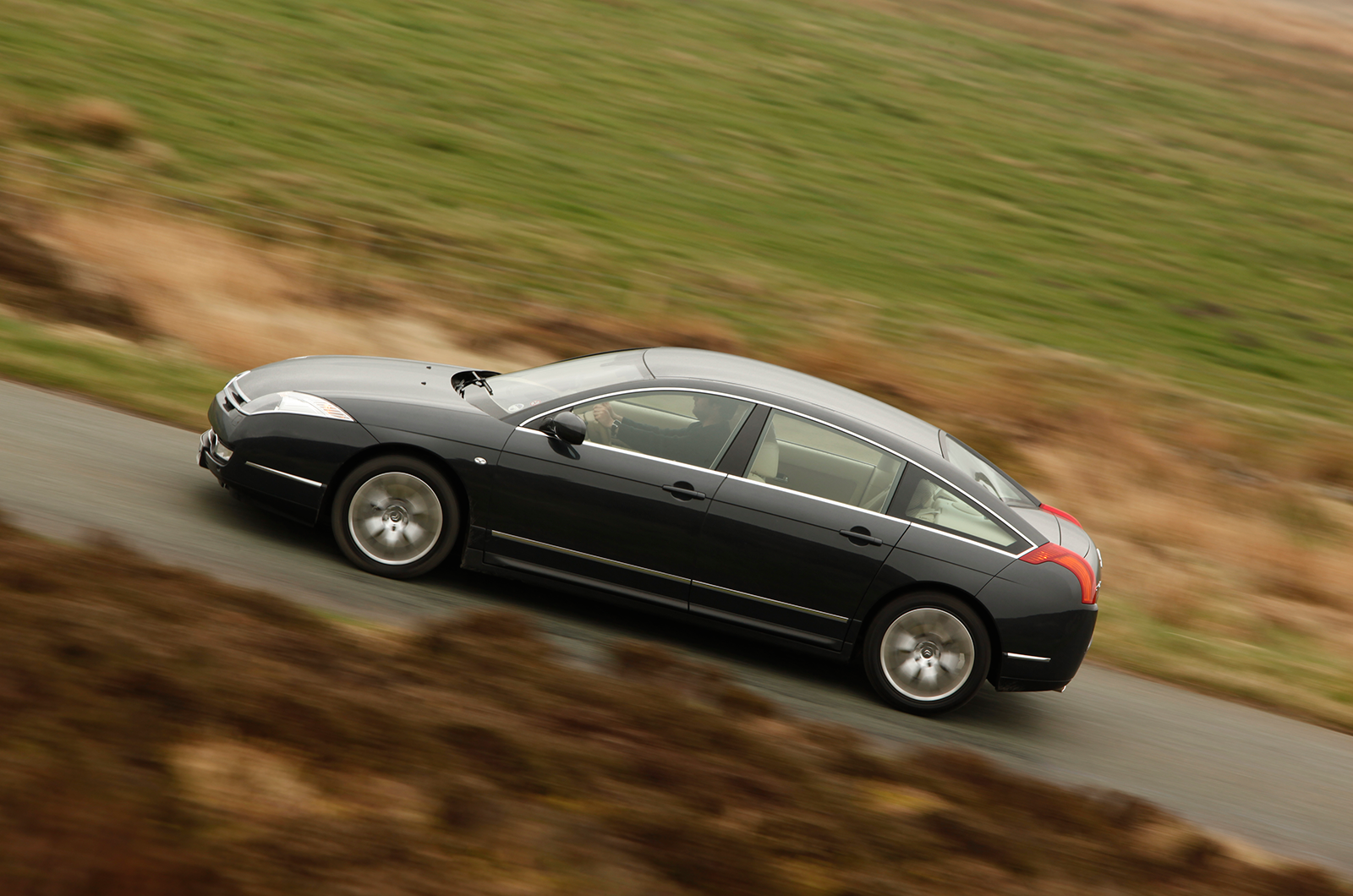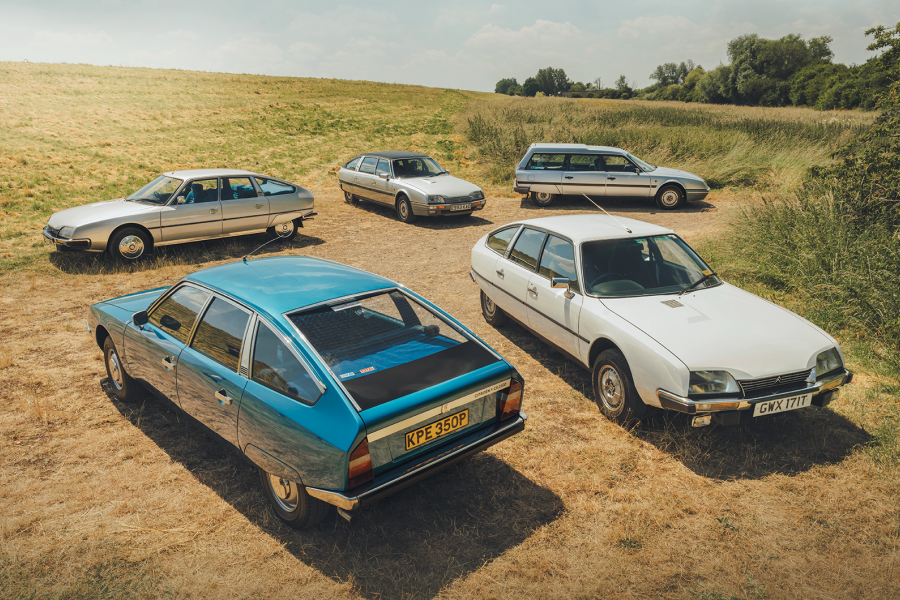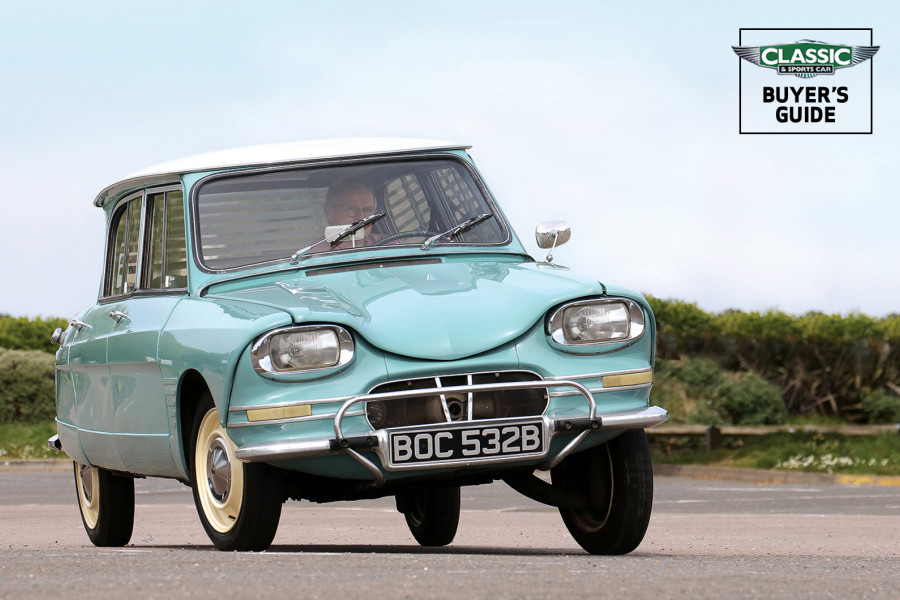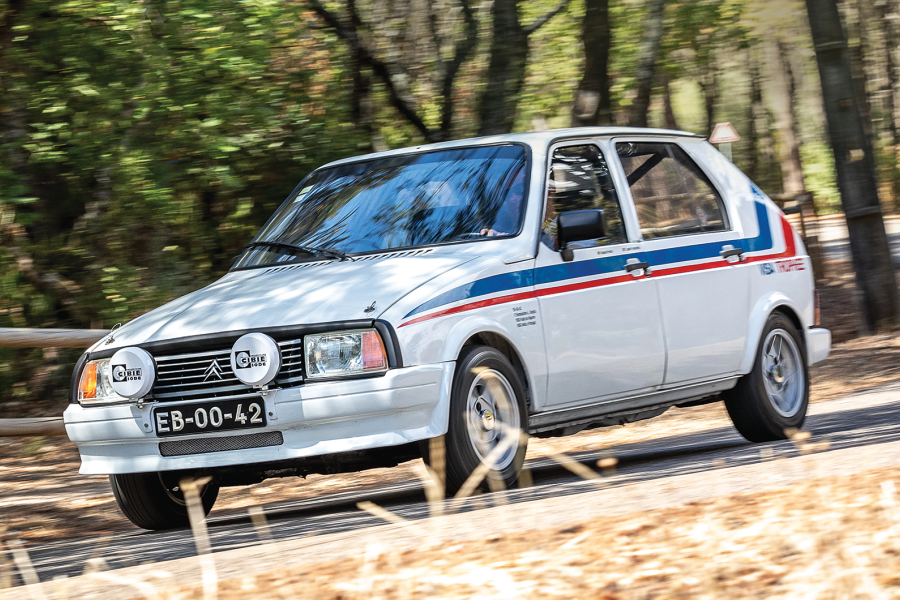It was all part of the inevitable Peugeot cost-cutting and ensuing rationalisation that had followed the Maserati sale to Alejandro de Tomaso and the failure of a plan to joint-build a big saloon with Lancia.
Still, Peugeot had no reasons to kill off the extraordinary CX and, like many charismatic mid-’70s designs (Ferrari 400i, Lamborghini Countach, Porsche 928), it stayed in production until the early ’90s, and didn’t look old even when it was retired.
In fact, you could say that the CX is one of the most influential car designs of all time.
Look at the slashing curve of its window-line, the triangular light clusters front and rear and the way that they bisect the trapezoidal grille.
These are all hallmarks of Ford’s industry-changing ‘edge’ design, in particular the original five-door Focus, a car the world and his labrador attempted to copy.
Today, it helps the CX to look both original and modern, even in chromed early form.
Replacing the CX was a daunting task, and one that the new Peugeot Société Anonyme (PSA) Group would not take lightly.
XM is the next step in this Double Chevron story
The CX had been plagued with niggling build-quality issues and, in the ’80s, a new ‘executive’ class of buyer had sprung up, one who was maybe more interested in the badge on the front than the substance under the skin.
They would typically only keep a car for a year, too, ditching it for a new model as soon as possible, so ‘residual values’ – something Citroën buyers of old weren’t bothered about – shot to the top of their wish-lists.
These people invariably bought German, but many had been tempted by the blindingly rapid 168bhp CX GTi Turbo, which rekindled memories of the SM.
If Citroën was to be successful in this new, arguably slightly blinkered era, this was the kind of car that could do it.
It would also bring a 3-litre V6 engine back to the range after 14 years. And Citroën would call it the XM.
XM still has Citroën’s bump-eliminating suspension, by then called Hydractive
After several consultations, styling was entrusted to American Art Blakeslee of Bertone, who concocted what must be the world’s most subtle retro-design.
Sure, there’s the obligatory ’90s ‘floating’ roof and straight waistline indentation, but look at the flat, thin nose and the upward kink towards the rear – they’re all hallmarks of Opron’s 1970 SM.
Even the shape of the smoked glass of the rear reversing and indicator-light clusters pay homage to the SM’s chromed rump.
Behind the wheel, the black cabin seems slightly dour, but there are playful touches, too, such as the black strip of smoked plastic behind the wheel, from which warning lights emerge and vanish.
A green digital glow in the middle of the rev-counter reminds you which gear you’re in. It’s all charmingly reminiscent of early kids’ hand-held digital computer games.
(l-r) XM’s sober cabin is perhaps a reflection of PSA parent; complexity tarnished the XM’s reputation
Drive the XM and you’ll find a confidence not always present in its ancestors.
There’s little understeer, the brakes are more conventionally controlled and the 2.1-litre turbodiesel unit has ample torque for cannoning the XM from bend to bend.
The bump-eliminating suspension, by then called Hydractive, still features – you’ll barely notice cattlegrids – but with it comes a firmness more orientated towards the sporting driver, accompanied by the usual clicking and hissing as sensors make calculations about the pressure exacted on the spheres and adjust load accordingly.
With a V6, it would make for a brilliant four-door GT. No wonder the XM featured in the most notable movie car-chase since Bullitt, pursued through Marseilles by an Audi S8 in Ronin.
Sadly, executive buyers spurned the XM, which expired in 1999. PSA descended into dullness, with Citroëns offering little flair and Peugeots piling on the pounds while losing their frisky handling.
But after pressure from Renault, revitalised under Patrick le Quément, Citroën threw caution to the wind and started exploring its roots once more.
Clockwise from top: The Citroën XM and C6 together; C6 cabin lacks eccentricity of the DS and CX, but it’s beautifully detailed and loaded; under the bonnet of the Citroën C6
First up was the C4 in 2004, with its ‘reinvention of the steering wheel’ packing a fixed central boss with fingertip controls and clothing it all in strikingly French style. Sébastien Loeb took four of his nine WRC titles in C4s.
Then came the C6 in ’06. This is, without doubt, the most accomplished luxury car Citroën has ever made, and thankfully shows deep understanding of the marque at PSA.
The classic short tail is still there but, rather than falling into retro clichés (the CX window lines have been duplicated for visibility), it’s as bold and original as big Citroëns have always been.
Its rear lights drape delightfully over the wings like Dali’s clocks. On the inside, the driver wants for nothing on this Exclusive – with even a head-up display on the ’screen so you don’t have to take your eyes off the road.
It’s a sea of leather and slabs of Mukonto wood as far as the eye can see.
What’s most interesting, though, is how it drives. With the exception of the 240bhp from the brilliant joint PSA-Ford-JLR HDi V6 providing acceleration that would represent supercar performance to a DS buyer, the ride, handling and steering are familiar, across all these cars and all these years.
What’s new is a Sport button that switches from CX lope to XM corner-attack.
Clockwise from top left: ID20, CX, C6 and XM
Yet what’s most satisfying about this quartet of Citroën saloons is their intellectual appeal, their demand that you get to know the car’s unique engineering ethos before you learn to drive them most smoothly.
Too many luxury cars are either try-hards – of the genuine opinion that you live in fear of Mr Jones from next door coming round with a tape measure to compare ‘shutlines’ – or like a simpering Jeeves, scurrying around desperate to cater for your every whim.
A big Citroën, on the other hand, is like sinking into a favourite armchair for a deep and meaningful conversation with a philosophically inclined friend.
They are places to think, and to contemplate the answer to the question that they all pose: just what is luxury, exactly?
Thanks to Stephen Clements Gray for his ID, Sean Padden for his CX, Paul King of Paris Autos for his XM and Citroën UK for the loan of its C6
Images: Tony Baker
FACTFILES
Citroën ID20
- Sold/number built 1955-’75/1,455,746 (all ID/DSs)
- Construction steel monocoque punt, with steel outer panels, glassfibre roof
- Engine iron-block, alloy-head, ohv 1985cc in-line ‘four’, with single Solex or Weber carb; 103bhp @ 5500rpm; 101lb ft @ 3000rpm
- Transmission four-speed manual, driving front wheels
- Suspension independent, at front by twin leading arms rear trailing arms; self-levelling hydropneumatic spheres, anti-roll bars f/r
- Steering powered rack and pinion
- Brakes powered discs f (inboard), drums r
- Length 15ft 10½in (4839mm)
- Width 5ft 10½in (1791mm)
- Height 4ft 10in (1473mm)
- Wheelbase 10ft 3in (3124mm)
- Mpg 21
- Weight 2811lb (1275kg)
- 0-60mph 15 secs
- Top speed 95mph
- Price new £1399 (DSpécial, 1970)
Citroën CX 2000 Athena
- Sold/number built 1975-’91/1,042,300 (all CXs)
- Construction steel monocoque
- Engine all-alloy, sohc 1985cc in-line ‘four’, with Weber twin-choke carb; 106bhp @ 5500rpm; 122lb ft @ 3250rpm
- Transmission five-speed manual, driving front wheels
- Suspension (where different to DS) front upper and lower arms; interconnected front-rear
- Steering powered rack and pinion
- Brakes powered discs
- Length 15ft 2½in (4636mm)
- Width 5ft 8in (1727mm)
- Height 4ft 5½in (1359mm)
- Weight 2722lb (1234kg)
- Wheelbase 9ft 4in (2845mm)
- 0-60mph 11.8 secs
- Top speed 104mph
- Mpg 24
- Price new £3195
Citroën XM 2.1 TDSX
- Sold/number built 1989-’99/329,388 (all XMs)
- Construction steel monocoque, with glassfibre bonnet and hatchback
- Engine iron-block, alloy-head, sohc 2088cc diesel ‘four’, with three valves per cylinder, mechanical injection and Mitsubishi turbo; 110bhp @ 4300rpm; 183lb ft @ 2000rpm
- Transmission four-speed auto
- Suspension Hydractive (hydropneumatic, with extra sensors and controlling electronics) front MacPherson struts
- Steering powered rack and pinion
- Brakes powered discs
- Length 15ft 5¼in (4705mm)
- Width 5ft 10½in (1791mm)
- Height 4ft 6½in (1384mm)
- Wheelbase 9ft 4¼in (2851mm)
- Weight 3205lb (1455kg)
- 0-60mph 9.6 secs
- Top speed 121mph
- Mpg 43
- Price new £18,449
Citroën C6 3.0 HDi Exclusive
- Sold/number built 2006-date/722 (UK)
- Construction steel and aluminium monocoque
- Engine all-alloy, dohc-per-bank 2992cc diesel V6, high-pressure direct injection, twin turbos; 240bhp @ 4000rpm; 332lb ft @ 1600rpm
- Transmission six-speed auto, driving front wheels, with ESP and traction control
- Suspension Hydractive 3+ (with switchable modes) front double wishbones rear multi-link
- Steering speed-sensitive, power-assisted rack and pinion
- Brakes discs, with servo, ABS, EBD and EBA
- Length 16ft 1¼in (4908mm)
- Width 5ft 6in (1860mm)
- Height 4ft 9½in (1464mm)
- Wheelbase 9ft 6¼in (2900mm)
- Weight 4130lb (1873kg)
- 0-60mph 8.9 secs
- Top speed 149mph
- Mpg 38
- Price new £37,895
READ MORE
Buyer’s guide: Citroën CX
Citroën Traction Avant camionnette: van extraordinaire
Citroën GS Pallas vs Vanden Plas 1.7: avant-garde for the masses
20 groundbreaking cars from Citroën’s first 100 years
